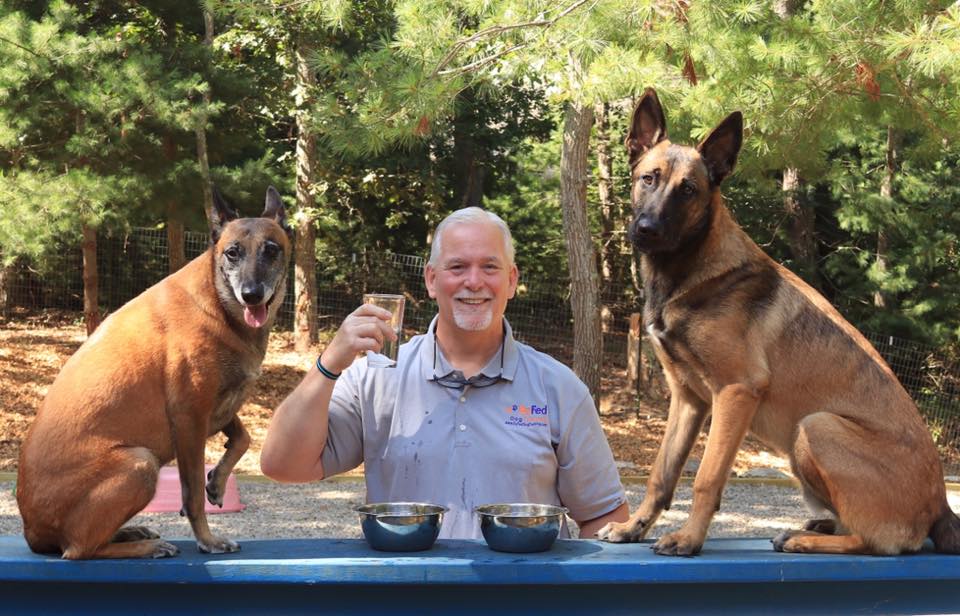Ask the Expert: Training 2+ Dogs to Use the SpotOn System and More
Dear Experts,
I have two SpotOn collars and two dogs with vastly different temperaments. What's the best method for training multiple dogs to the system?
- Hannah, MA

Dear Hannah,
That’s a great question! We can certainly understand training two dogs at once to minimize your time spent, but this is one situation where multi-tasking isn’t a good idea!
SpotOn certified trainer Rick Alto recommends limiting external stimuli (things that can make your dog more distracted) and following this approach:
"During the initial stages of learning new behaviors, it is not fair to add too much external stimuli (i.e. another dog) because you are increasing the distraction level too soon and well before your dog has learned the new behaviors and is ready for higher expectations,” Rick says. “Until both dogs are fully trained and proofed with the alert tones, warning tones, and stimulation, if applicable, they each need to be trained separately.”
“You need to set your dog up for success,” Rick continues. “Each dog is unique and will learn differently and quite possibly is motivated by different things (i.e. food, praise, or a toy).” Watch this quick video on determining what motivates your dog.
“You need to set your dog up for success,” says SpotOn expert trainer, Rick Alto. “Each dog is unique and will learn differently and quite possibly is motivated by different things (i.e. food, praise, or a toy).”
Before jumping into training, you'll need to figure out what motivates your dog. This will become the cornerstone of training.
Rick recommends first determining what factors motivate your dog, and then using that knowledge to your advantage when training, being sure to make each 15-minute training session fun. He notes:
It needs to be like a game where your dog associates the tones with returning back to the target area where they are showered with high value treats and praise. All good things happen when they hear the tone and respond back to the target area and the trigger (tones) needs to elicit the behavior (return to the target area) every time. If you try to do this too fast, skip steps, or introduce distractions—like another dog—you will likely flounder and become frustrated.
Just like people, no two dogs are exactly alike and dogs are not like appliances, where they operate the same way for everyone. Owning and training a dog is about trust and the relationship. The relationship must be solid before the training can commence.
Once your dogs have independently demonstrated that they know what the different tones and stimulation (if applicable) mean and are performing the desired behaviors (return to the target area in response to the tones and/or stimulation) with a high degree of proficiency (85-90%) with distractions present, then and only then, can you bring them together because this will be a whole other level of distraction for each dog.
When you bring the dogs together initially, I would suggest taking some steps backward by going to an earlier exercise in your training plan and then slowly proof the training with a 6-foot leash, and then a long-line before you allow them to free roam with supervision. My analogy is that we need to crawl, walk and then run, in that order.
We hope this helps to clear things up! Taking the time to train each dog separately before you bring them together will remove the possibility of frustration for pup and owner alike.
Do you have questions for our experts? Either leave them in the comments below or email us.

Rick Alto
Rick is a certified professional dog trainer; graduate of the prestigious National K9 School for Dog Trainers in Columbus, Ohio; and a professional member of the International Association of Canine Professionals (IACP) where he serves on the board of directors and oversees the service dog and legislative committees.
His journey with dog training started when he was 10 years old and his mother brought home a standard poodle named Sam, who had been retired from the show ring and needed to learn ALL the basics. Friends and neighbors remarked at Rick’s innate ability with dogs and referred to him as the local “dog whisperer.”
After a 36-year career as a special agent in federal law enforcement, Rick decided to “retire” and pursue his passion and fulfill his dream by entering the world of dog training full-time.
As a dog trainer, Rick is dedicated to positive and effective training solutions that are balanced and fair for the dog. Rick is equally committed to furthering his education, allowing him to offer you the best possible training solutions and methods.



